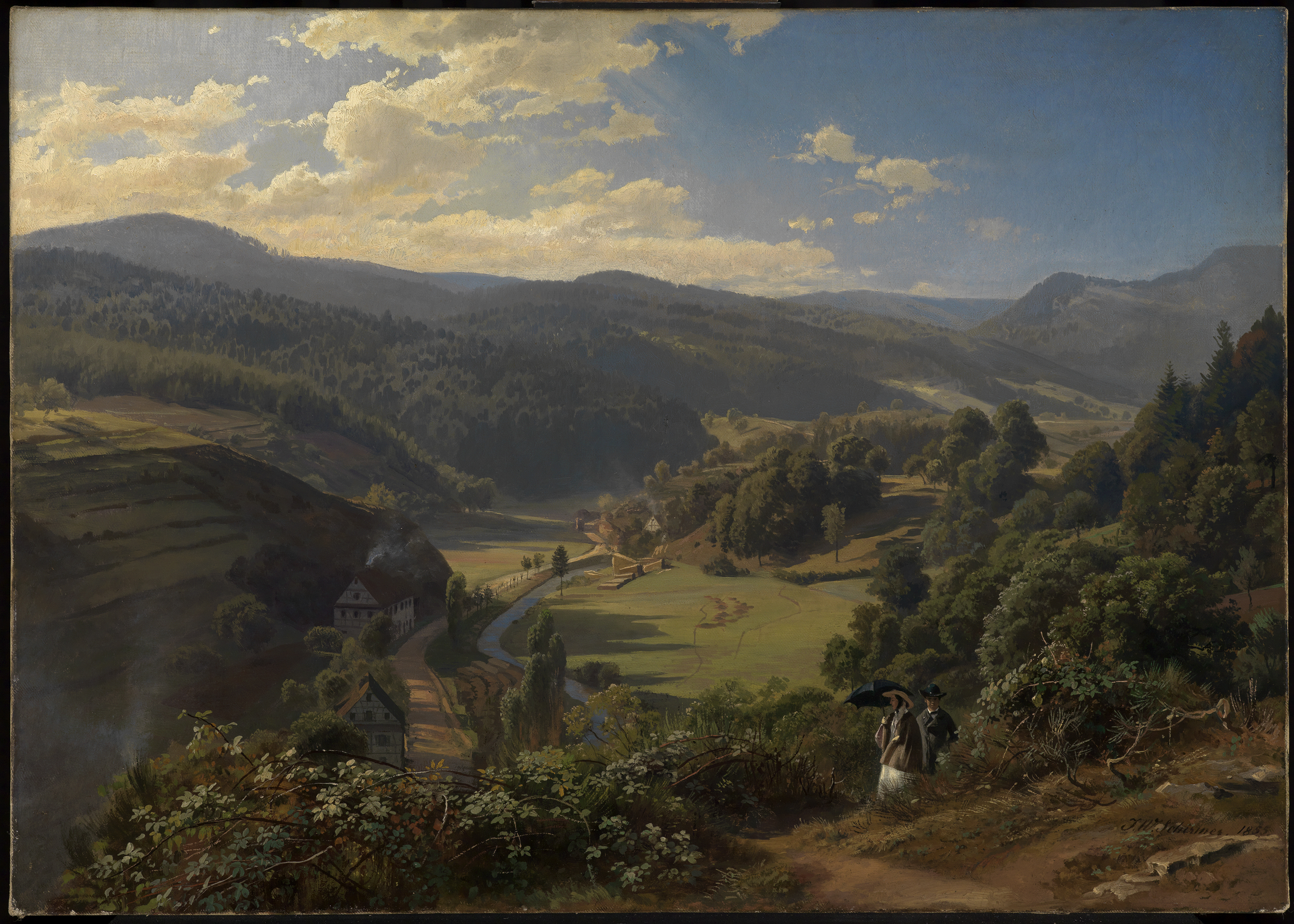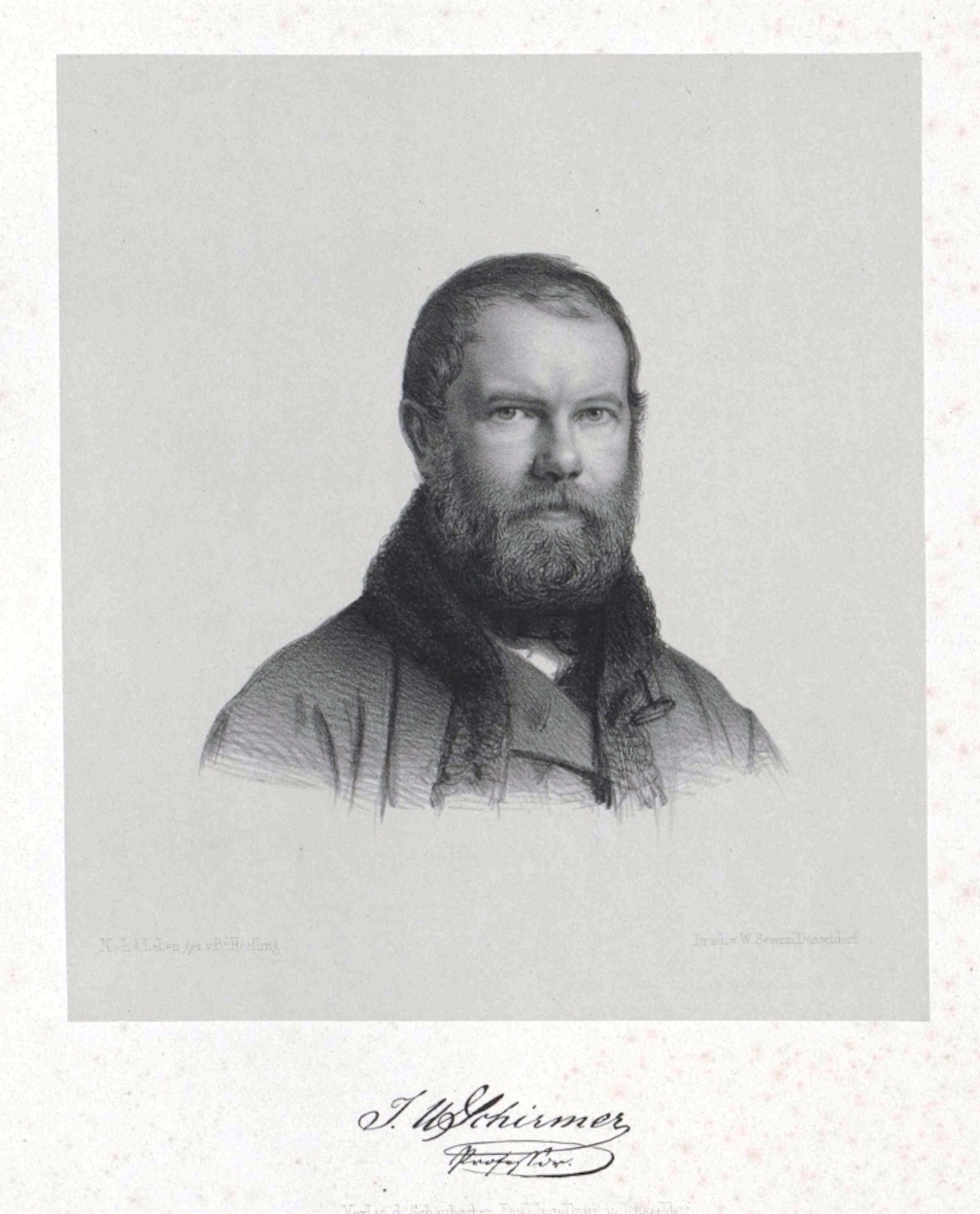This picture belongs to an original four-part series exhibited in the Karlsruhe Kunsthalle in 1855, dedicated to the regent Frederick and his fiancée Louise of Prussia. Schirmer captured the views from the surroundings of Baden-Baden at different times of day without aiming for a cosmological scheme. Although they were preceded by precise nature studies, he executed these paintings in the studio. They were painted one year after the regent had called him, being the director of the newly founded art school in Dusseldorf, to Karlsruhe.
The Geroldsau valley presents itself from the eastern foothills of the Leisberg hill. From its bramble-covered slope, the view sweeps south. A few houses, including the town mill, are lining the winding Grobbach stream and the road that follows it (the outset of today’s Schwarzwaldhochstraße). As if in a basin, the early morning light is caught in the meadows in front of the mill. Diagonally above the sawmill is the Höllhäuserweg road, a thin ochre-colored ribbon on a sunlit hill. In the distance, the meticulously drawn mountain ranges of the Black Forest complete the composition: the Steinberg, Badnerhöhe with Vorfeldkopf, Langert, Urberg, Lanzenkopf, and Solberg mountains.
The long shadows of the trees and the dark slopes to the left, from which veils of smoke are emerging, indicate that the early autumn day has just begun. The view of the northern Black Forest makes you feel the fresh atmosphere of an autumn morning. It not only invites us to look, but also, as emphasized by the motif of the lady under a parasol approaching together with a boy, to wander in a lucid, walkable, peaceful world.
From a historical point of view, Schirmer took up the veduta tradition that had always predominated in the Baden landscape painting. Whereas the veduta was primarily concerned with an objectively valid view of a section of nature, sometimes intensified by additions, Schirmer heightened it to the illusion of the moment. He observed the momentary appearance of atmospheric phenomena without (as the Impressionists did later) detaching them from their topographical context and making them independent as the main theme.
We present today's work thanks to the Staatliche Kunsthalle Karlsruhe. If you love landscapes as much as we do, please check our DailyArt Prints here!
P.S. Have you heard of the wonderful landscapes by Hudson River School painters? You must see them. <3


 Johann Wilhelm Schirmer
Johann Wilhelm Schirmer